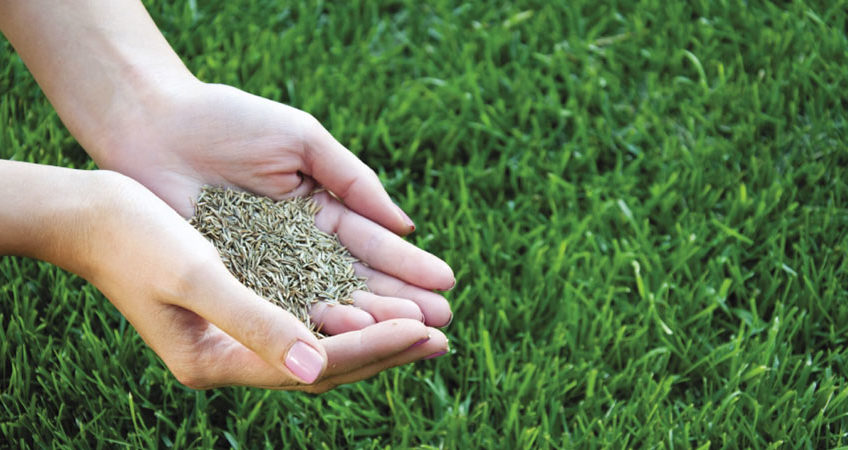Caring for a newly seeded lawn can raise a lot of questions. How are you supposed to begin the watering process? When is a good time to begin mowing? Most of these questions are asked because we want to find out how to get the best final results when seeding our lawns. The first weeks and months require special care in order to achieve a successful seeding. The fast changing weather that we experience in our region can also make seeding quite challenging. Warmer temperatures in the late summer and fall, combined with periods of very wet and very dry conditions, can complicate things even more. Maintaining a newly seeded lawn can be a tricky and intricate task. We have compiled some of our own tips and guidelines to assist you during the seeding process, in hopes that you will achieve the healthiest and best looking lawn that you can.
Watering
It is recommended to water frequently for approximately 10 minutes per area, to keep the newly planted seeds moist. Cut watering back to a maximum of once a day when the grass reaches about one inch in height. It is recommended to water in the morning, so that the leaf blades don’t remain wet overnight. Although water is crucial for seed germination, typical fall moisture will normally provide enough moisture to do the job. If it does not rain for several days, hand watering or sprinkling may be necessary. With watering, you can expect your grass seed to germinate far more quickly than without, usually in about two to three weeks. The goal is to get as much grass to germinate prior to soil temperatures falling. Once soil temperatures dip below a certain level, the lawn will stop growing and “go to sleep” for the winter.
Mowing
Proper mowing technique is often one of the most overlooked aspects of maintaining a newly seeded lawn. If possible, try to delay mowing for one week or more. Avoid any “deep raking” or aggressive scratching of the soil in any seeded area as this may damage new seedlings. Using a blower or leave vac will typically not have an impact on the growth of the seed. Scattered sticks or leaves on your lawn while the aeration and seeding process is done will not cause any issues for seed growth.
Patience
The entire process of caring for a newly seeded lawn takes a lot of time. It is important to be patient during this period so that your lawn can look its best in the long run. Newly seeded areas shouldn’t receive any foot traffic for at least a month after the seeds have begun to germinate. Grass seedlings are also sensitive to chemical injury. Herbicides should not be applied until the lawn has been mowed at least three or four times. Keep an eye out for weeds, and if you begin to notice them it is best to hand pull them before they begin to spread.
Lawn Care Service
Seeding and maintaining your lawn can be a daunting task for anyone to do on their own. Working with a professional lawn care service can save you the time and hassle, while also ensuring that you get the best intended results. Blue Grass Lawn Service has been providing their fall lawn services to home and property owners in New Jersey and Pennsylvania for over 36 years. If you think you need assistance when it comes to seeding your lawn this fall, we highly encourage you to reach out to us.
